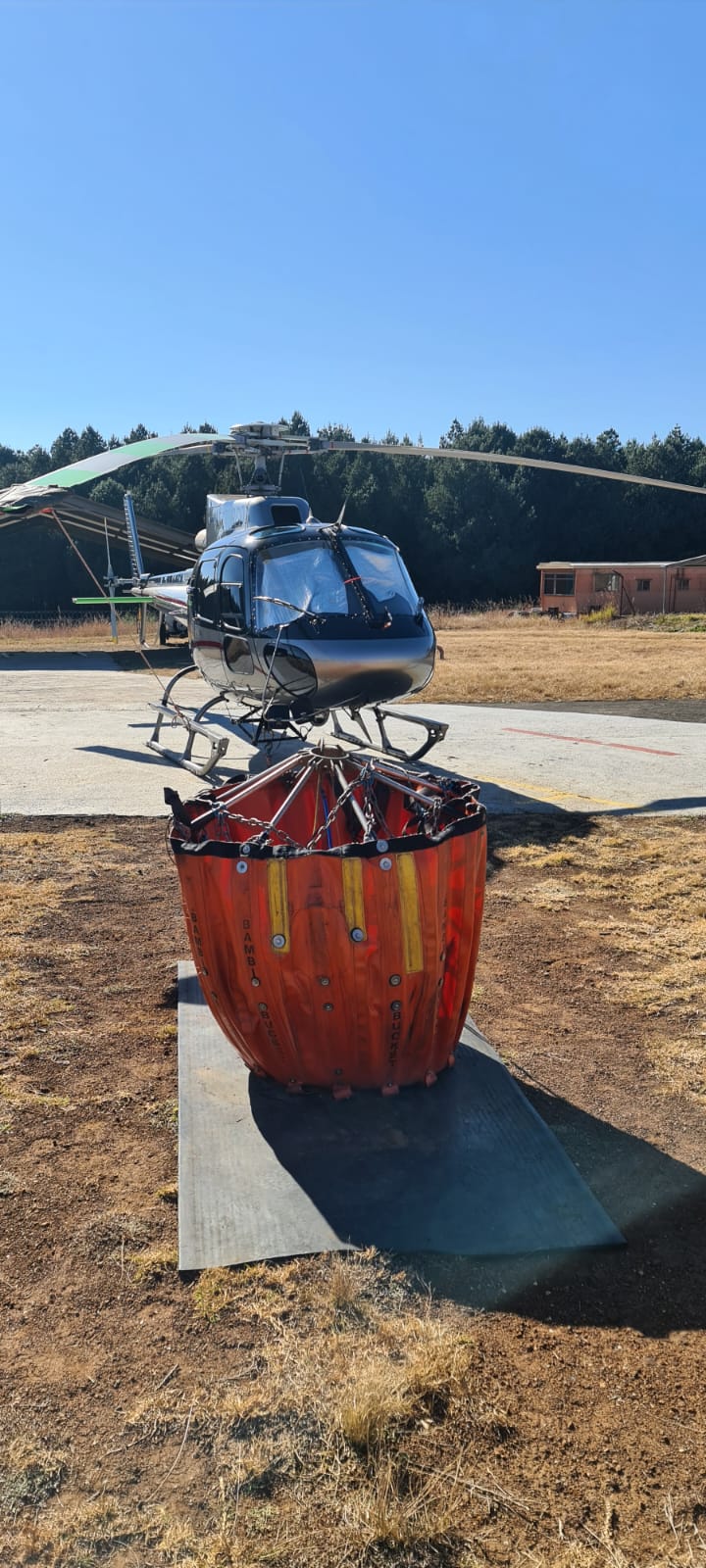
One of the most awe-inspiring sights is that of helicopters water bombing and firefighting with helicopters. Swooping down, water buckets dangling beneath them, ready to unleash a deluge on the raging fires below. Whether it be wildfires or commercial fires, teams have to be ready at all times to jump into action.
This dramatic firefighting technique, known as water bombing or aerial firefighting, plays a crucial role in containing and extinguishing fires that threaten landscapes, homes, and lives. We took a look at what it entails as well as unpacked some interesting “did you know” facts!
How Water Bombing Works
Water bombing and firefighting with helicopters involves helicopters equipped with specialised buckets, tanks, or hoses capable of carrying and delivering large volumes of water or fire retardants directly to fire-stricken areas. These helicopters are nimble and versatile, able to access remote and rugged terrain where traditional firefighting vehicles cannot reach.
The process begins with reconnaissance flights to assess the fire’s behaviour and identify strategic points for intervention. Once targets are identified, helicopters swiftly fill their water buckets from nearby water sources such as lakes, rivers, or specially prepared dipping points. Depending on the type of fire and its location, helicopters may drop water directly onto flames or create firebreaks by saturating surrounding vegetation with fire retardants.
Interesting Did You Knows
- History: Firefighting with helicopters dates back to the 1940s, initially as experimental efforts that have since evolved into a vital component of modern firefighting strategies.
- Capacity: Firefighting with helicopters means that the aircraft can carry impressive amounts of water or fire retardant. For instance, the Erickson S-64 Aircrane, also known as the “Sky Crane,” can carry up to 2,650 gallons (about 10,000 litres) of water in its belly. Normal helicopters like our Bell 407, usually carries about 1000 litres in the bucket however.
- Speed: Despite their size and the weight of the water they carry, firefighting helicopters are surprisingly agile. They typically fly at speeds ranging from 80 to 120 miles per hour (130 to 225 kilometres per hour), allowing for quick response times to fires over vast areas.
- Altitude and Precision: During firefighting operations, helicopters often fly at low altitudes, sometimes as close as 100 feet (30 metres) above the ground. This low-flying capability enables them to deliver water or retardants with pinpoint accuracy, minimising collateral damage.
- Endurance: Depending on the helicopter model and mission specifics, firefighting with helicopters can typically operate for 2 to 3 hours before needing to refuel. This endurance is crucial for sustained firefighting efforts in challenging conditions.
Training Requirements for Pilots
Piloting a firefighting helicopter demands exceptional skill and training due to the high-stress environment and challenging flying conditions. Pilots undergo rigorous training programs that include:
- Flight Skills: Manoeuvring in turbulent air currents and confined spaces while managing heavy loads requires advanced flying skills.
- Fire Behaviour Awareness: Understanding how fires behave and spread is crucial for effective decision-making during operations.
- Safety Protocols: Strict adherence to safety protocols ensures the safety of crew members, ground personnel, and the public during operations.
Role in Wildfires, Commercial, and Industrial Fires
Wildfires
Firefighting with helicopters is particularly effective in battling wildfires due to their agility and ability to access remote areas quickly. By deploying water or retardants directly onto flames, they can prevent fires from spreading and assist ground crews in containment efforts.
Commercial and Industrial FiresIn urban settings, helicopters equipped with firefighting capabilities provide crucial support in tackling large-scale fires in high-rise buildings, industrial complexes, and other densely populated areas. Their ability to deliver water or retardants from above can help suppress fires that are challenging to reach with traditional firefighting equipment.
Global Impact and Innovations
Around the world, the demand for firefighting with helicopters capabilities continues to grow as climate change increases the frequency and intensity of wildfires. Innovations in technology, such as the development of more efficient water delivery systems and improved fire retardants, enhance the effectiveness of aerial firefighting efforts.
Countries prone to wildfires, like Australia, the United States, and parts of Europe, have invested heavily in expanding their aerial firefighting fleets and improving coordination between ground and air crews. These efforts are crucial in mitigating the devastating impact of wildfires on communities, economies, and natural ecosystems.
The Bottom Line
Water bombing with helicopters epitomises the fusion of cutting-edge technology and human bravery in the fight against nature’s fury. From the daring pilots who navigate through smoke and flames to the engineers who innovate new firefighting techniques, every aspect of aerial firefighting represents a commitment to protecting lives and landscapes. As wildfires continue to pose a growing threat worldwide, the role of helicopters in firefighting remains indispensable—a testament to human ingenuity and determination in the face of adversity.
At MCC, we have the fleet and crew able to tackle any firefighting with helicopters, whether it be a wild fire, or in a commercial area. Contact us today for more information.

